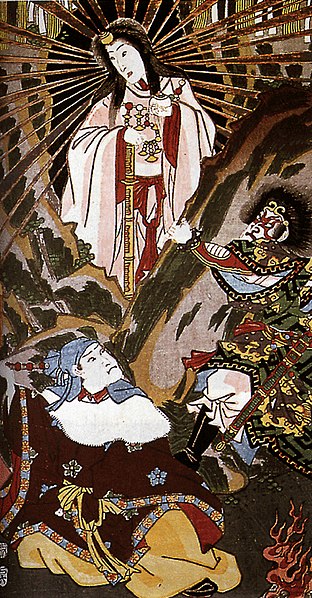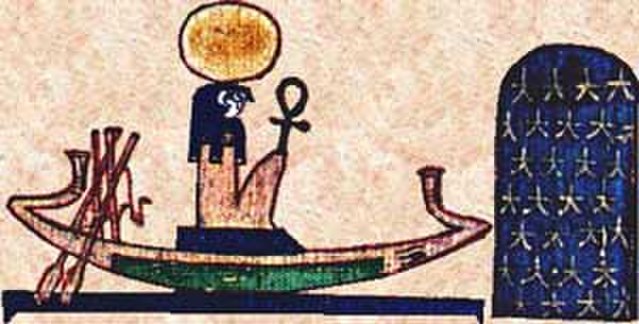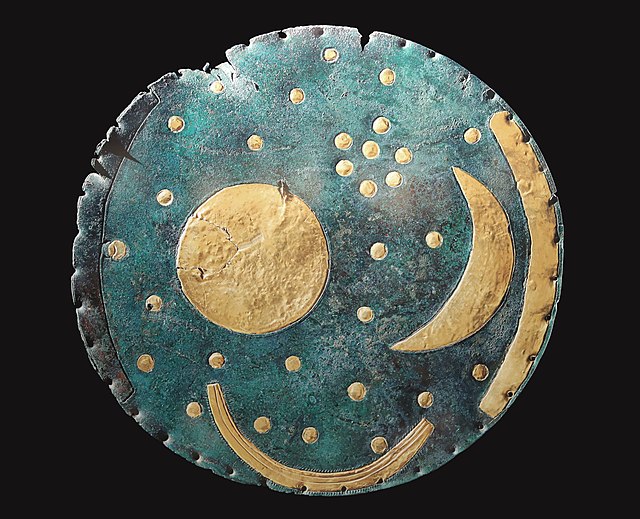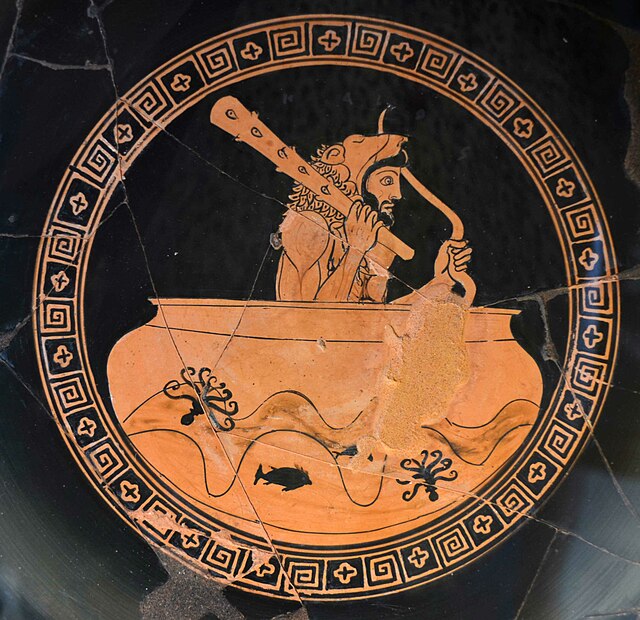Amaterasu Ōmikami, often called Amaterasu for short, also known as Ōhirume no Muchi no Kami (大日孁貴神), is the goddess of the sun in Japanese mythology. Often considered the chief deity (kami) of the Shinto pantheon, she is also portrayed in Japan's earliest literary texts, the Kojiki and the Nihon Shoki, as the ruler of the heavenly realm Takamagahara and the mythical ancestress of the Imperial House of Japan via her grandson Ninigi. Along with her siblings, the moon deity Tsukuyomi and the impetuous storm god Susanoo, she is considered to be one of the "Three Precious Children", the three most important offspring of the creator god Izanagi.
Amaterasu emerging from the cave, Ama-no-Iwato, to which she once retreated (detail of woodblock print by Kunisada)
Izanagi purifying himself (misogi) by immersing in the Tachibana River (Natori Shunsen)
Installation of the Sun Goddess (Amaterasu)
Susanoo throwing the heavenly horse into Amaterasu's loom
A solar deity or sun deity is a deity who represents the Sun or an aspect thereof. Such deities are usually associated with power and strength. Solar deities and Sun worship can be found throughout most of recorded history in various forms. The Sun is sometimes referred to by its Latin name Sol or by its Greek name Helios. The English word sun derives from Proto-Germanic *sunnǭ.
A solar representation on an anthropomorphic stele from Rocher des Doms, France, Chasséen culture, 5th-4th millennia BC.
Ra in his barque
The Nebra Sky Disc, Germany, c. 1800–1600 BC
Heracles in the golden cup-boat of the sun god Helios, 480 BC.








